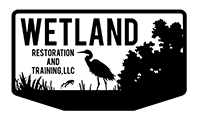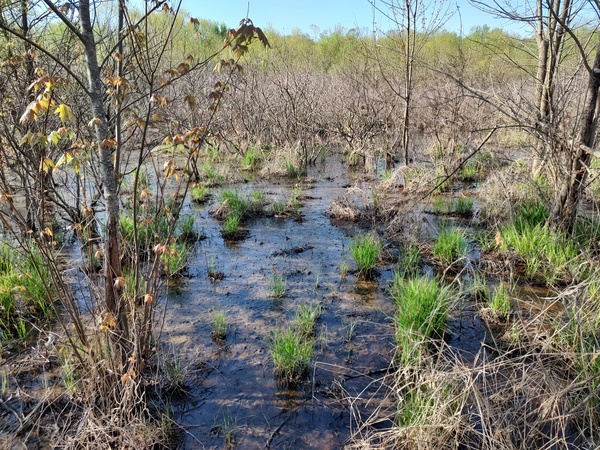How To Build A Wetland
Join us on an enlightening journey with Tom Biebighauser, as the great outdoors become our classroom for designing and constructing vibrant wetlands!
Dive into the art and science of building and restoring ecosystems that not only provide sanctuary for a diverse range of flora and fauna but also offer crucial environmental benefits like runoff purification, groundwater recharge, and support for rare species.
With seven episodes already available for your viewing pleasure, this series unpacks the highly effective methodologies crafted by Tom through his 46 years of experience. Having restored over 3,000 wetlands and streams across farms, rangelands, forests, and educational institutions, these videos are a treasure trove of knowledge and inspiration.
In collaboration with Larry Dixon, a renowned photographer and content creator, we’ve produced a series of episodes that delve into innovative restoration techniques such as Surface Water, Groundwater, Compacted Clay Liner, and Aquatic-Safe Liner methods.
Subscribe to our channel to ensure you never miss out on the latest episodes of “How You Can Build a Wetland”. Whether you’re a professional looking to expand your skills or a nature enthusiast eager to contribute to environmental preservation, this series will equip you with the knowledge and inspiration to make a difference. Join our community and be part of the global movement towards ecological restoration and sustainability.
Quick Introduction To Building Wetlands
Series Trailer
You don’t need to be an engineer or hold a Ph.D. to create your own wetland. Inspired by his daughter’s suggestion to create videos rather than writing more books on the topic, Tom, with the help of professional photographer Larry Dixon, has crafted a hands-on guide to designing and building wetlands on your land or the property you manage. Watch these videos and join us on this journey of restoration and discovery.
Wetland Types and Values
Episode 1
Tom introduces you to the many types of wetlands and the plants and animals that depend on them. You’ll see how wetlands are providing critical habitat to rare species of wildlife, and how progressive communities are building wetlands to clean runoff, replenish groundwater, and to control flooding.
How to use a Laser Level and a Dual-Sided Grade Rod
Episode 3
Learn how easy it is to set up a laser level and take elevations with a dual-sided grade rod. Being able to measure elevations using a laser level is an essential skill you’ll need to design and build wetlands of any type or size anywhere in the world.
Marking the Perimeter of a Wetland for Construction
Episode 4
Tom shows how to use a laser level and a rod to measure changes in elevation that is important for marking the perimeter of a wetland project. You’ll see wire flags can be placed in the ground to mark the perimeter of the designed wetland. The steps taken apply to any type of wetland that is being designed and allow you to build the largest possible wetland possible at the lowest cost.
Digging The Test Hole
Episode 5
Building a wetland requires an understanding of soil texture and groundwater elevations unless you’ll be happy with a dry hole in the ground. See how Tom interprets what’s in a test hole to help identify the best technique to use in building a wetland. You’ll learn how to determine clay content and see how various tools can be used to retrieve soil samples and measure the elevation of groundwater.
Office Identification of Possible Wetland Projects
Episode 6
This video shows you how to identify in the office areas where wetlands may be designed and built. You’ll see how photos available on Google Earth, historic aerial photographs that are for sale, Ortho Imagery, and NRCS Soil Survey data can be used to identify multiple sites on large areas of land where it may be possible to restore wetlands.
Wetlands Built Over 2,000 Years Ago!
Episode 7
Come visit Fort Ancient Earthworks and Nature Preserve near Oregonia, Ohio and see vernal pond wetlands that were built by hand 2,000 years ago. Personnel with the Ohio History Connection describe how the largest and most well-preserved hilltop enclosure was built using sticks and baskets to form ridges up to 23-feet high along with many ephemeral wetlands that provide habitat for Wood Ducks, frogs, salamanders, and dragonflies.
Why Wetlands Hold Water and How They Were Drained
Episode 8
Tom uses scale models to show why wetlands hold water and how they have been drained for agriculture. He focuses on natural wetlands found in basins that have thick layers of compacted clay, and wetlands found in basins with permeable soil where groundwater is near the surface . Tom then demonstrates how ditches and buried drainage structures were used to dry wetlands for farming.
How Streams were Moved to Drain Wetlands
Episode 9
The most effective action people took to convert wetlands into farmland was to divert the source of water. This was done by digging ditches down the center of valleys, and by moving streams into ditches that were dug along the base of hills and mountains. Tom compares natural streams that have sheet-flow of water on the surface with moved and channeled streams in deep ditches with vertical banks that are eroding. He describes how wetlands were drained and the elevation of groundwater was lowered over vast landscapes by placing streams in ditches.


